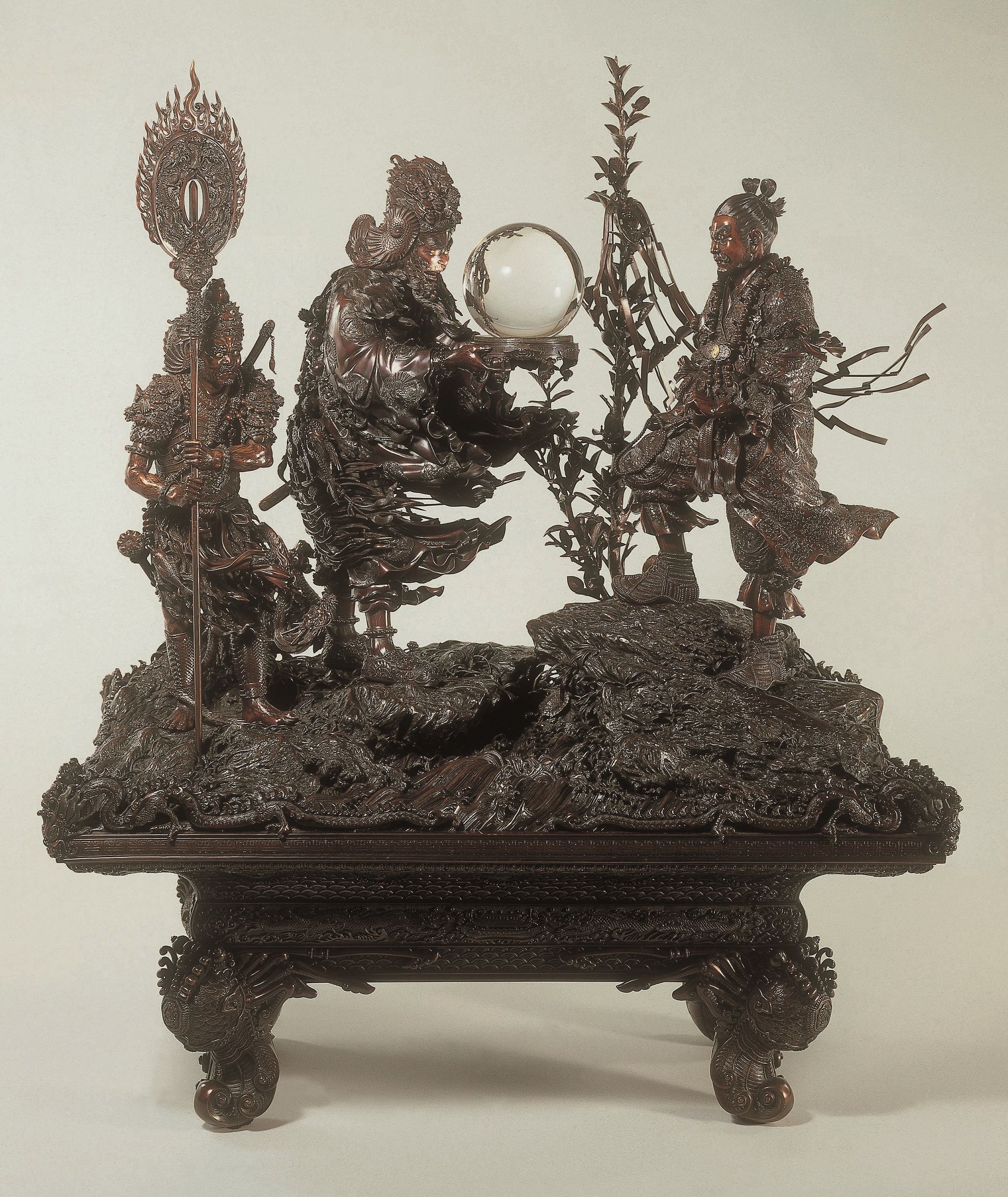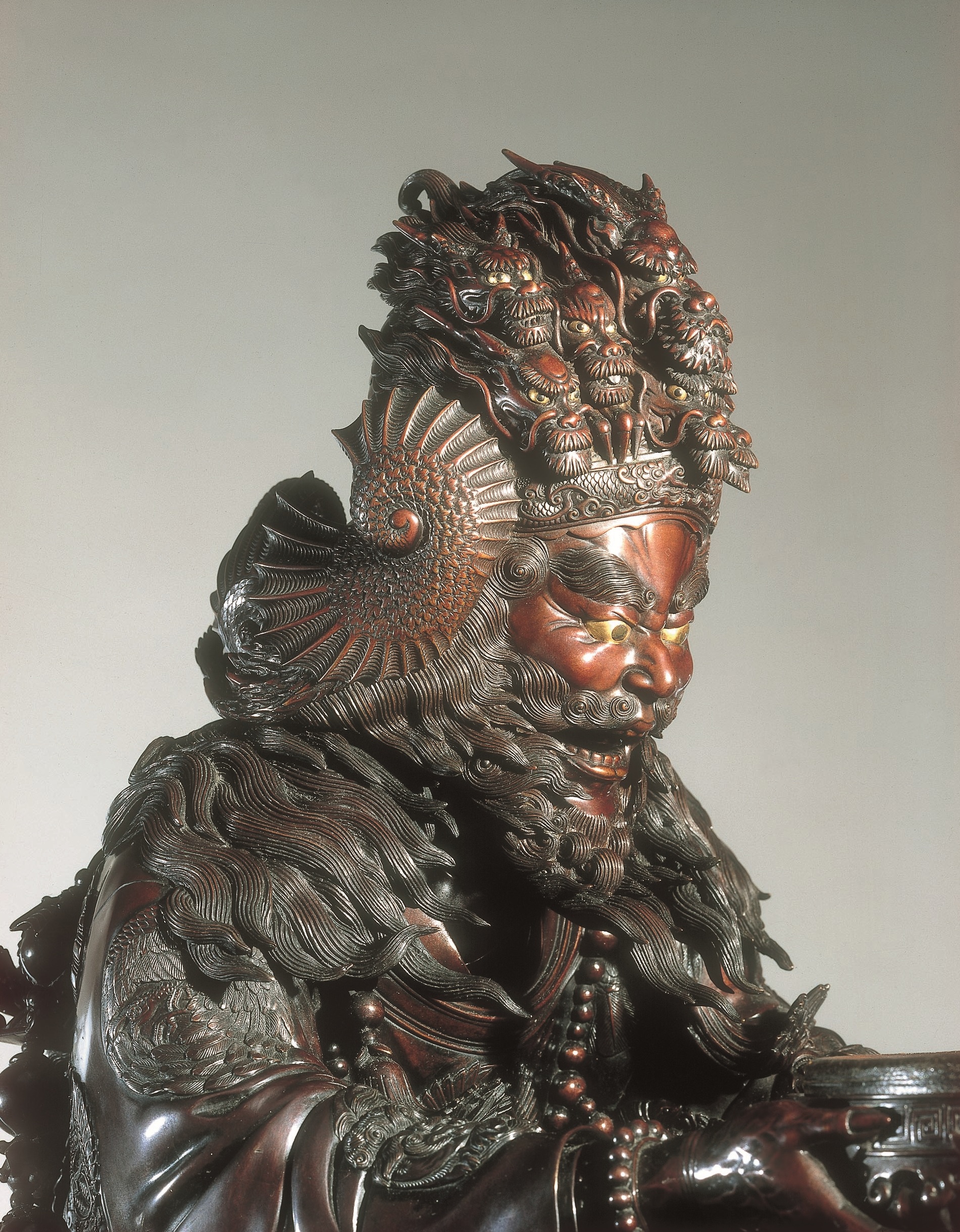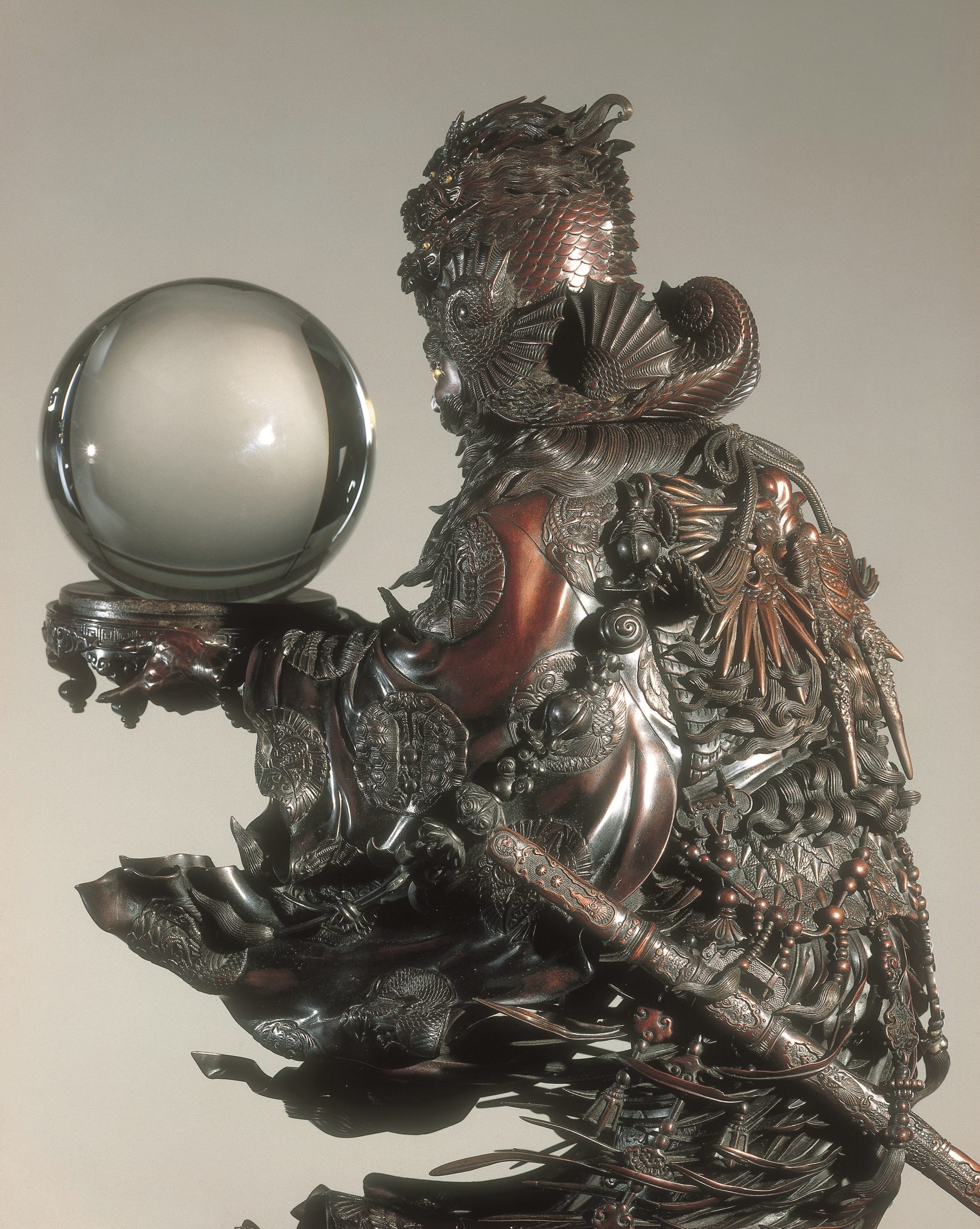 Print Page
Print Page
 Print Page
Print Page
Location: Japan
Materials: bronze, with gilding; crystal ball
Dimensions: 99 x 80 cm
Accession Number: M 17
Other Notes:
A bronze mythological group of Susanoo no Mikoto receiving the yasakani no magatama (sacred jewel). The legendary warrior standing wearing an ornately patterned coat and voluminous trousers gathered below the knee. Around his neck a necklace of magatama and tigers’ claws. The sea-god (Haneakarutama no Mikoto according to the inscription on the base) wrapped in a windswept voluminous coat hung with seaweed, spiked tassels, and a dragon-fish, a tachi hanging from his belt and on his back a dragon-cape. His extraordinary helmet formed from eight dragon-heads, fish scales, fins, and tails. His expression one of intense ferocity as he gazes into the crystal ball. At his side, an attendant standing holding a flaming banner, wearing a tunic of reptile-scales and tortoise plastron, a shell spread over his back. His helmet formed from a barnacle-encrusted fish surmounted by a seated toad. A tachi hangs on his back and a club from his waist, while a dragon writhes around his legs and body. They each stand on a rocky, seaweed-strewn base above turbulent waves. Behind them, a two-horned kirin and various other creatures, including a kappa, blowfish, and turtles emerging from among the rocks. A pair of gohei (Shinto ritual banners) are attached to the branches of a tree in the background. The lower part of the base cast with roundels of fantastic and ghoulish sea creatures on a stylized-wave ground. The legs formed from the bodies of crayfish.
Beneath the base appears the following inscription:
Susanoo no Mikoto was the child of Izanagi no Mikoto and the younger brother of Amaterasu Omikami. Their father determined that Amaterasu Omikami should rule the land of heaven and that Susanoo no Mikoto should rule the land of the Eight Great Islands [of Japan]. But [Susanoo no Mikoto], dissenting, requested that he not rule the Eight Great Islands but go to the land of the underworld. [His father] told him to do as he wished. Susanoo no Mikoto thought: ‘Let me tell Amaterasu Omikami that I will go to the land of the underworld before I go’. At that time there was a god called Haneakarutama no Mikoto, also called Kushiakarutama no Mikoto. He offered a beautiful jewel to [Susanoo no] Mikoto. This is the jewel called the mizuyasakani no magatama. [Susanoo no] Mikoto was highly delighted and, arriving [back] in the land of heaven, he gave it to Amaterasu Omikami. So accounts [of this] appear in the Nihongi and the Kogo shui. Composed by Tomita Tetsunosuke (Junior, fifth rank). Calligraphy by Katakura Akinori (Junior, seventh rank).
Bibliography:
O. Impey, M. Fairley (eds.), Meiji No Takara: Treasures Of Imperial Japan: Metalwork Vol II, London 1995, cat. 98.
J. Earle, Splendors of Imperial Japan: Arts of the Meiji period from the Khalili Collection, London 2002, cat. 139, pp. 200–3.


